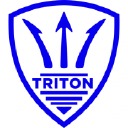Let’s Talk Tech
Teldor elevates your network with versatile products and construction materials, setting new benchmarks in connectivity and meeting the tech-centric demands of your projects.
In the dynamic world of connectivity, Teldor understands the frustration of unreliable connections. Our cutting-edge solutions redefine flexibility, actively adapting to your dynamic needs. This ensures a seamless and dependable network.
Explore our diverse product range, featuring high-speed LAN cables, Industrial Ethernet, Fiber optic cables, Robust Instrumentation and control cables, as well as Hybrid and Coaxial cables. Additionally, discover a wide spectrum of construction materials, including Copper, Aluminum, Marine Bronze and a wide variety of compounds grades for harsh environments.

Powering Your Tomorrow With
Unmatched Connectivity

Wide Portfolio

Customization

Swift Delivery

Quality
Typical Uses





Our Impressed Customers Share



FAQ’s
1. What are marine cables?
Marine cables are specialized cables designed for use in marine environments. They serve various applications, including Computer & LAN, control & alarm, instrumentation, sensors & power transmission for Marine, Oil & Gas Offshore & Onshore, submerged & subsea applications, as well as petrochemical & LNG plants and Wind farms.
2. What are the key features of marine cables?
Marine cables are typically designed to withstand harsh environmental conditions such as saltwater exposure, extreme temperatures, and changing environmental conditions, as well as intrinsically safe locations. They often have robust insulation and protective layers to ensure resistance to various oils, emulsions and chemicals, as well as to maintain integrity in harsh conditions. All marine cables must have approval by classification societies.
3. What are the types of marine cables?
There are various types of marine cables, including communication cables for data transmission, control & alarm cables, instrumentation, fiber optic cables, fire-resistant cables, coaxial cables, low-voltage cables, hybrid cables, and submerged or subsea cables.
4. How are marine cables different from regular cables?
Marine cables differ from regular cables in terms of their construction materials, challenging environmental resistance parameters, and approval by classification societies. Marine cables are specifically built to withstand the unique challenges of marine environments regulated by the International Maritime Organization (IMO) as well as by national regulators.
5. What industries use marine cables?
Marine cables are utilized in various industries, including onboard ships, offshore oil and gas rigs, onshore receiving plants for liquefied natural gas (LNG) and petrochemical plants. Additionally, they play a crucial role in renewable energy sectors such as wind and tidal power, as well as undersea exploration.
6. How are marine cables installed?
The installation methods for marine cables depend on the specific application and locations.
7. What is the lifespan of marine cables?
The lifespan of marine cables varies depending on factors such as environmental conditions, maintenance, and the quality of the cable. Generally, marine cables are designed for long-term durability and safety.
8. How are marine cables maintained and repaired?
Maintenance of marine cables often involves regular inspections to identify any damage or wear & tear. Repairs can be conducted by splicing or replacing damaged sections, with specialized equipment and expertise often required for underwater repairs.
9. Why is fire resistance important for marine cables?
Fire resistance in marine cables is crucial for ensuring the safety and integrity of personal & onboard systems. In the event of a fire on a ship or offshore platform, standard cables may contribute to the spread of flames, jeopardizing the safety of personnel and the vessel’s structural integrity. Fire-resistant marine cables are specially designed to withstand high temperatures and prevent the spread of fire, ensuring that transmission abilities, receiving data, and operating equipment are maintained under fire conditions for up to 3 hours. These cables are constructed with fire-resistant materials and insulation, minimizing the risk of damage or failure during a fire emergency. The use of fire-resistant marine cables is a critical safety measure to protect both people and valuable assets in marine environments
10. What standards are used for marine cables?
The manufacturing and installation of marine cables are regulated by several international standards to ensure safety, reliability, and performance in marine environments. One of the prominent standards for marine cables is the IEC 60092 series, developed by the International Electrotechnical Commission (IEC). This series outlines specifications and requirements for electrical installations in ships, including the construction and testing of marine cables. Compliance with these standards is essential to meet industry-wide safety and performance benchmarks, ensuring that marine cables can withstand the challenging conditions of maritime applications.
Ocean of Cableability
With decades of mastery, our diverse portfolio spans high-data-rate Copper, LAN, Fiber Optic and industrial cables, delivering connectivity solutions tailored to diverse needs. Prioritizing swift response and delivery without compromise, we ensure projects stay on schedule. In critical environments, our fire-resistant cables uphold safety standards.
Teldor’s aptitude for customization is exemplified through high-quality, tailored solutions that reduce footprints and meet specific project requirements. Choose Teldor for top-tier proficiency, innovation, and a world of “Cableability” that powers seamless connectivity solutions.
Ready to Boost Your Offshore Power?
By clicking submit, you consent to allow teldor.com to store and process the personal information submitted above to provide you the content requested.